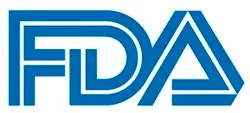News
Article
FDA Approves HPV Self-Collection Test for Cervical Cancer
Author(s):
The FDA has approved one of the first HPV self-collection solutions, which can be used to identify women who are at risk of developing cervical cancer.
US FDA

The FDA has approved one of the first human papillomavirus (HPV) self-collection solutions for use in the United States (US), which can be used to identify women who are at risk of developing cervical cancer, according to information from a press release.1
This HPV self-collection solution enhances testing accessibility by allowing women to collect their own samples privately. This may present an accessible screening alternative for patients compared with collection in a health care setting. With the HPV self-collection, individuals can gather their own samples, which are then sent to a laboratory for analysis using Roche’s cobas® molecular HPV test. If a positive HPV result is obtained, the patient may proceed with further care under a health care provider.
Notably, Roche and the National Cancer Institute have collaborated to participate in the Cervical Cancer “Last Mile” Initiative, which has, in part, facilitated the regulatory pathway toward the approval.
“With vaccinations, innovative diagnostic tools, and screening programs, achieving the World Health Organization’s goal of eliminating cervical cancer by 2030 is within reach,” Matt Sause, chief executive officer of Roche Diagnostics, stated in the press release.1 “Our HPV self-collection solution helps support this goal by reducing barriers and providing access to HPV screening by allowing people to privately collect their own sample for HPV testing.”
The cobas HPV test is used for both primary screening and co-testing. Although a Pap smear can identify cervical abnormalities, the cobas HPV test detects 14 types of high-risk HPV genotypes that increase the risk of developing cervical cancer, including specific results for HPV 16, HPV 18, and 12 other high-risk pooled genotypes.
The HPV self-collection solution is compatible with the cobas HPV test. This test operates on the cobas 4800 and the fully automated cobas 5800/6800/8800 Systems, which provide the fastest time to results. The cobas 4800 system can deliver up to 96 results in approximately 3 hours, the cobas 6800 system can produce 384 results within an 8-hour shift, and the cobas 8800 system can generate 1056 results within 8 hours.
The clinical benefits of this research were validated through the IMPACT trial, which included a diverse representation of patients including 21% Black patients, 24% Hispanic-Latino patients, and 0.3% American Indian or Alaskan Native patients. This diversity was essential for accurately assessing the performance of dual stain in populations with higher rates of HPV incidence, according to the press release.
IMPACT enrolled 35,263 patients between the ages of 25 and 65 years who were undergoing routine HPV screening.2 The cobas 6800/8800 Systems detected high-risk HPV, HPV 16, and HPV 18 in 15.1%, 3.1%, and 1.4% of patients, respectively. The incidences of cytologic abnormalities and HPV declined with increased age. Among patients who had a biopsy and a colposcopy, the rates of cervical intraepithelial neoplasia of grade 2 or higher and grade 3 or higher were 8.8% and 3.6%, respectively. Among patients who tested positive for HPV 16, the baseline cumulative risk for cervical intraepithelial neoplasia of grade 3 or higher was 13.6% (95% CI, 11.5%-15.7%); this rate was 16.9% (95% CI, 14.4%-19.8%) at 1 year. Patients who tested negative for HPV had the lowest cumulative risk for cervical intraepithelial neoplasia of grade 3 or higher, at 0.06% (95% CI, 0.02%-0.10%).
In the US, over half of patients diagnosed with cervical cancer have either never been screened or have been screened infrequently, leading to a lack of participation in routine screening programs.1 Several factors contribute to this low participation rate, including limited access to health care, social and economic barriers, past traumatic experiences, and cultural concerns. This self-collection solution addresses these concerns, providing an alternative to clinician-collected procedures. This method reduces barriers to equitable care and delivers accurate and reliable results, the press release emphasized.
References
- Roche announces FDA approval of one of the first HPV self-collection solutions in the U.S., expanding access and screening options to help eliminate cervical cancer. News Release. Roche. May 15, 2024. Accessed May 15, 2024. https://www.globenewswire.com/news-release/2024/05/15/2882048/0/en/Roche-announces-FDA-approval-of-one-of-the-first-HPV-self-collection-solutions-in-the-U-S-expanding-access-and-screening-options-to-help-eliminate-cervical-cancer.html
- Safaeian M, Wright TC Jr, Stoler MH, et al. The IMproving Primary Screening And Colposcopy Triage trial: human papillomavirus, cervical cytology, and histopathologic results from the baseline and 1-year follow-up phase. Am J Obstet Gynecol. 2021;225(3):278.e1-278.e16. doi:10.1016/j.ajog.2021.03.047









